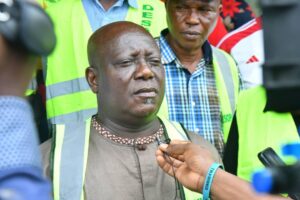ON THE GREAT PROSPECTS OF THE NIGERIAN GAS FLARE COMMERCIALIZATION PROGRAMME (NGFCP)
By Zik Gbemre
We are glad to see more recent news on the prospects of what the President Muhammadu Buhari-led administration is trying to achieve with its Nigerian Gas Flare Commercialization Programme (NGFCP). It is no longer news that the Federal Government has, through the Federal Ministry of Petroleum Resources, came up with policies aimed at reducing gas flaring by 2020 through the NGFCP initiative, which it approved in 2016. Then last year, President Muhammadu Buhari issued the Flare Gas (Prevention of Waste and Pollution) Regulations of 2018.
Just recently, it was reported that investors who get the nod of the Federal Government to capture and commercialize flared gas in the ongoing Nigerian Gas Flare Commercialization Programme, will be handed over their preferred flare sites by May 2020, a timeline of the programme has disclosed. According to the timetable shared by the NGFCP Programme Manager, Mr. Justice Derefaka, at the 2019 edition of the annual Society of Petroleum Engineers (SPE) Olobiri Lecture Series and Energy Forum (OLEF) in Abuja, the Government hopes to conclude the distribution of the about 178 flare sites to investors by then, after which implementation of their business plans would commence.
Between the period leading to the award of permit to access flare sites, the Government would appoint international lawyers for the programme; hold a bidders’ conference; issue Request for Proposal (RfP) as well as open the gas flare data room to qualified applicants, evaluate investors’ proposals, make award to preferred bidders and then execute commercial agreements with them. the government disclosed that it would put out a total of 178 gas flaring sites it had so far identified, to be commercially acquired by investors under the programme. This would be through a competitive bidding process which would include the issuance of a permit to access flare gas to successful bidders, as well as rights to permit holders to exclusively off-take such quantities of flare gas at one or more sites, for use in an approved commercial gas project. It also said it was expecting $3.5 billion worth of inward investments by the third-party investors to drive the programme and achieve its targets of ending gas flare in Nigeria by 2020.
According to Derefaka, despite the drop in gas flaring by well over 70 per cent in the country over the past decade, Nigeria still flared about one billion cubic feet of it in 2017, exceeding the equivalent of 800 metric million standard feet per day (mmscfd) utilized for power generation and equivalent of 450mmscfd utilized in the domestic industry. Turning to the health implications of gas flaring in local communities in Nigeria, he said: “17 onshore gas flare points at Iwhrekan Community (Utorogu) in Delta State and Bayelsa State are estimated to cause 120,000 asthma attacks, 4,960 respiratory illnesses among children and 49 premature deaths per year in the region.”
In another related development, it was reported that over the next three years, the NGFCP, which can best be described as an ambitious plan to sell over a billion Standard Cubic feet (scf) of gas currently flared at 178 flare points across the Niger Delta, would cut Nigeria’s CO2 emissions by 13 million tons a year, which could be monetized under an emission carbon sale arrangement. This was revealed also by Justice Derefaka, during his presentation at the Society of Petroleum Engineers Oloibiri Lecture Series and Energy Forum (SPEOLEF), held in Lagos on April 25, 2019. Derefaka said the programme would stimulate action in five areas of critical importance to the Sustainable Development Goals (SDGs) including People, Planet, Prosperity, Peace and Partnerships – The 5Ps. Derefaka said the flared gas sale programme is consistent with Nigeria’s commitment to reduce GreenHouse Gasses (GHGs) under the Paris Climate Change Agreement. The programme is also designed as an important “climate change action plan” for the nation, allowing Nigeria not only to cut its CO2 emissions but halt a loss of $500million in emission credit value, Derefaka said.
According to data from the World Bank, CO2 emissions from Africa’s biggest oil producer were 96281 in 2014. Nigeria has the world’s 7th biggest gas flares despite a 70% decline in gas flaring over the past decade. In 2015, around 1,000 MMSCFD of gas was flared in Nigeria, exceeding the 800 MMSCFD utilized for power generation and around 450 MMSCFD used in the domestic industry. The NGFCP is viewed as a critical signpost in the country’s road map to energy sustainability. It is the first market driven program undertaken on this scale globally giving bidders the flexibility of choosing which flare site(s) to bid for, the flare gas price to offer to the Federal Government (taking into cognizance the NGFCP floor price of US$0.25cents per thousand standard cubic square feet of gas) and the end market gas products as well as the technology to be used. But it is still untested and fraught with uncertainty despite the huge enthusiasm, investors say. To assuage these concerns, the Federal Government has declared it is ending gas flaring by 2020. Unlike the previous six times this declaration has been made since 1984, this time, it is backed by political will.
Without a doubt, with the elaborated prospects of the what the NGFCP initiative can bring, we strongly believe it is a very worthy venture that should be encouraged by all stakeholders in the industry and the relevant Federal Government authorities – to see that it becomes a reality. All that we are urging the President Muhammadu Buhari-led administration, is that its NGFCP initiative should not end up on paper or in the book shelves like we have witnessed with past administrations. But rather, President Buhari, as the sitting President, as well as the Honourable Minister of State for Petroleum Resources should ensure that its ongoing Gas Flare Commercialization, which will liberalize the development of the nation’s gas sector, actually becomes a ‘reality’.
Zik Gbemre
National Coordinator
Niger Delta Peace Coalition (NDPC)
We Mobilize Others to Fight for Individual Causes as if Those Were Our Causes




